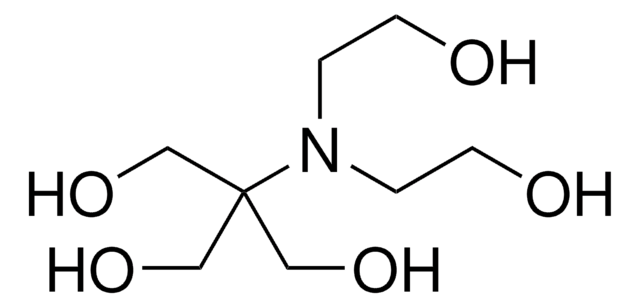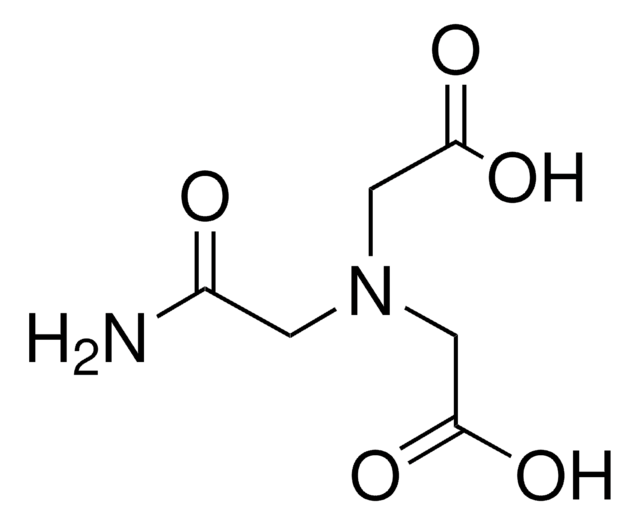A9883
ADA
≥98% (titration)
Synonyme(s) :
N-(2-Acetamido)iminodiacetic acid, N-(Carbamoylmethyl)iminodiacetic acid
About This Item
Produits recommandés
Pureté
≥98% (titration)
Forme
powder
pH
1.5-3.0
Plage de pH utile
6.0-7.2
pKa (25 °C)
6.6
Pf
219 °C (dec.) (lit.)
Solubilité
1 M NaOH: 160 mg/mL, clear, colorless
Application(s)
diagnostic assay manufacturing
Température de stockage
room temp
Chaîne SMILES
NC(=O)CN(CC(O)=O)CC(O)=O
InChI
1S/C6H10N2O5/c7-4(9)1-8(2-5(10)11)3-6(12)13/h1-3H2,(H2,7,9)(H,10,11)(H,12,13)
Clé InChI
QZTKDVCDBIDYMD-UHFFFAOYSA-N
Vous recherchez des produits similaires ? Visite Guide de comparaison des produits
Description générale
Application
Notes préparatoires
Mention d'avertissement
Warning
Mentions de danger
Conseils de prudence
Classification des risques
Acute Tox. 4 Oral
Code de la classe de stockage
13 - Non Combustible Solids
Classe de danger pour l'eau (WGK)
WGK 3
Point d'éclair (°F)
Not applicable
Point d'éclair (°C)
Not applicable
Équipement de protection individuelle
Eyeshields, Gloves, type N95 (US)
Certificats d'analyse (COA)
Recherchez un Certificats d'analyse (COA) en saisissant le numéro de lot du produit. Les numéros de lot figurent sur l'étiquette du produit après les mots "Lot" ou "Batch".
Déjà en possession de ce produit ?
Retrouvez la documentation relative aux produits que vous avez récemment achetés dans la Bibliothèque de documents.
Notre équipe de scientifiques dispose d'une expérience dans tous les secteurs de la recherche, notamment en sciences de la vie, science des matériaux, synthèse chimique, chromatographie, analyse et dans de nombreux autres domaines..
Contacter notre Service technique





